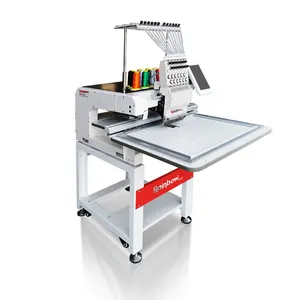Popular in your industry







Related Searches:





















Top categories
About air cylinder bore size
A bore size is an essential specification to consider when selecting a pneumatic cylinder. The bore size of a pneumatic cylinder refers to the diameter of the cylinder's cylindrical chamber where the piston moves back and forth. It is typically measured in millimeters (mm) or inches (in) and is a critical factor in determining the cylinder's force output and speed. A larger bore size allows for greater force generation but may sacrifice speed, while a smaller bore size offers higher speed at the expense of force. It is vital to select the proper bore size of a pneumatic cylinder to ensure optimal performance in various applications.
Importance of bore size in pneumatic cylinders
The bore size of a pneumatic cylinder plays a crucial role in determining the cylinder's force output. In pneumatic systems, the force generated by a cylinder is directly proportional to the effective area of the piston. The effective area is calculated based on the bore size of the cylinder. A larger bore size results in a larger effective piston area, allowing the cylinder to exert higher forces. Conversely, a smaller bore size translates to a smaller effective area and, consequently, lower force output. Therefore, choosing the right bore size is essential to ensure that the cylinder can generate the required force to perform the intended task effectively.
Moreover, the bore size of a pneumatic cylinder has a significant impact on the cylinder's speed and response time. The bore size influences the volume of compressed air that can act on the piston to move it within the cylinder. In general, a larger bore size requires more air volume to generate the force necessary for piston movement. While larger bore sizes can deliver higher forces, they may also result in slower piston speeds due to the increased volume of air required. On the other hand, smaller bore sizes demand less air volume, enabling quicker response times and higher speeds. Therefore, the choice of bore size directly affects the speed and responsiveness of the pneumatic cylinder, making it a critical consideration in applications where rapid actuation is essential.
Choosing the right bore size for a pneumatic cylinder
When selecting the bore size of a pneumatic cylinder, several factors must be taken into account. The requirements of the specific application, including the desired force output and speed, are paramount. Understanding the nature of the task the cylinder will perform is crucial in determining the appropriate balance between force and speed. For example, applications that prioritize force, such as heavy-duty lifting or pressing operations, may benefit from a larger bore size to ensure sufficient power, even at the expense of speed. Conversely, tasks that demand quick and precise movements, like in automation or manufacturing processes, may favor a smaller bore size to achieve higher speeds and improved responsiveness. The 4-inch bore pneumatic cylinder is a popular choice for applications needing substantial force.
Additionally, the available air supply and pressure in the pneumatic system should also be considered when choosing a bore size. Larger bore sizes require more air volume to function, so the system must have the capacity to provide an adequate supply of compressed air at the required pressure. Insufficient air supply can lead to performance issues, including slow actuation and compromised force output. Therefore, it is essential to evaluate the pneumatic system's capabilities and confirm compatibility with the selected bore size.
Understanding the relationship between bore size and stroke in pneumatic cylinders
Another critical factor in pneumatic cylinder sizing is the relationship between bore size and stroke. The bore size and stroke of a pneumatic cylinder are interdependent parameters that directly impact the cylinder's overall performance. While the bore size influences force output and speed, the stroke determines the maximum distance the piston can travel within the cylinder. A longer stroke allows the piston to cover a greater distance, making it suitable for applications that require extended linear motion. Conversely, a shorter stroke is more appropriate for tasks with limited travel requirements.
When selecting a pneumatic cylinder, it is essential to consider the compatibility between the bore size and stroke to ensure that the cylinder can meet the application's specific needs. A mismatch between these parameters can lead to inefficiencies, such as inadequate force or excessive speed. Therefore, a comprehensive evaluation of the application requirements, considering both the bore size and stroke, is crucial in choosing the right pneumatic cylinder for optimal performance.


































